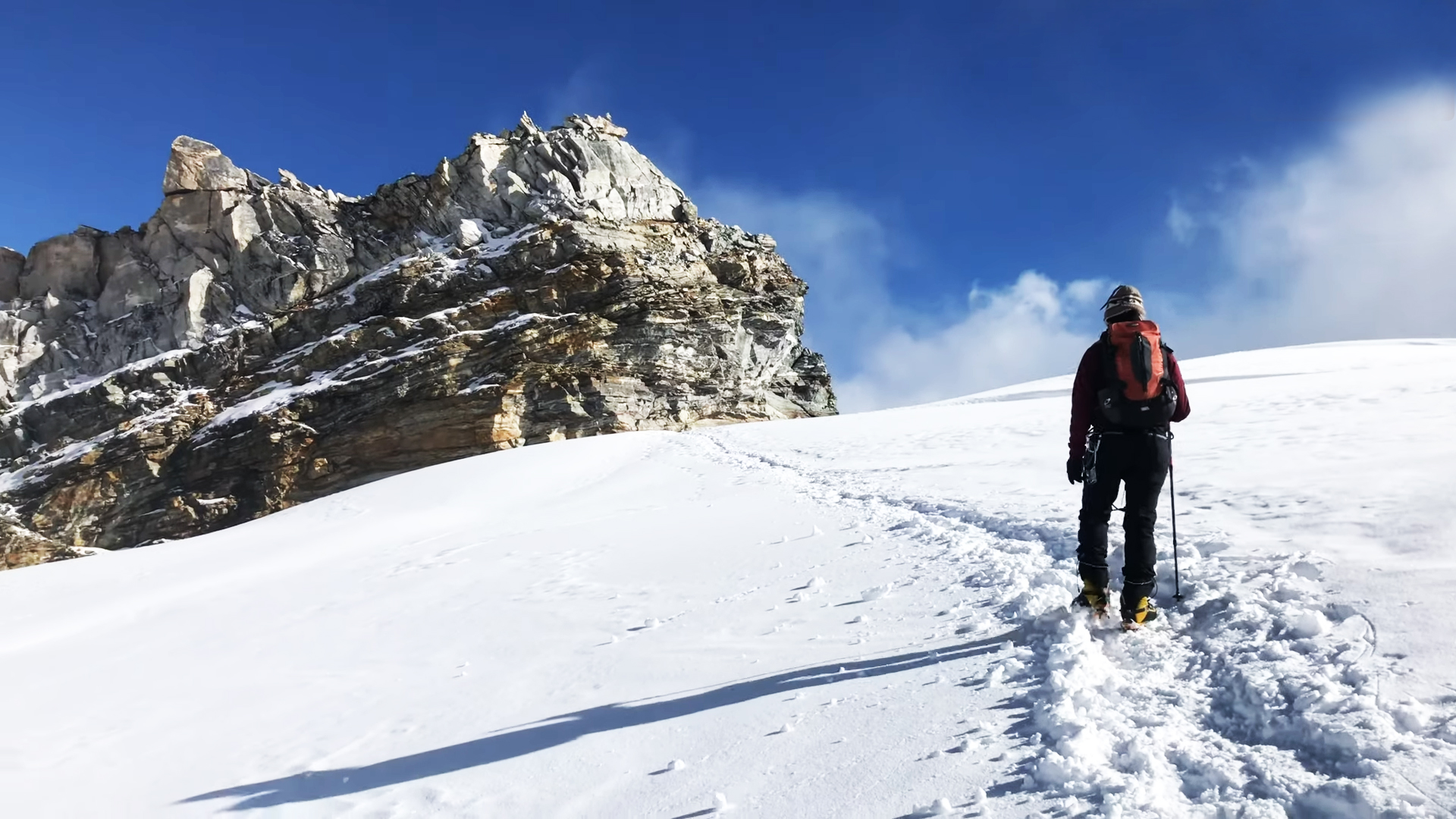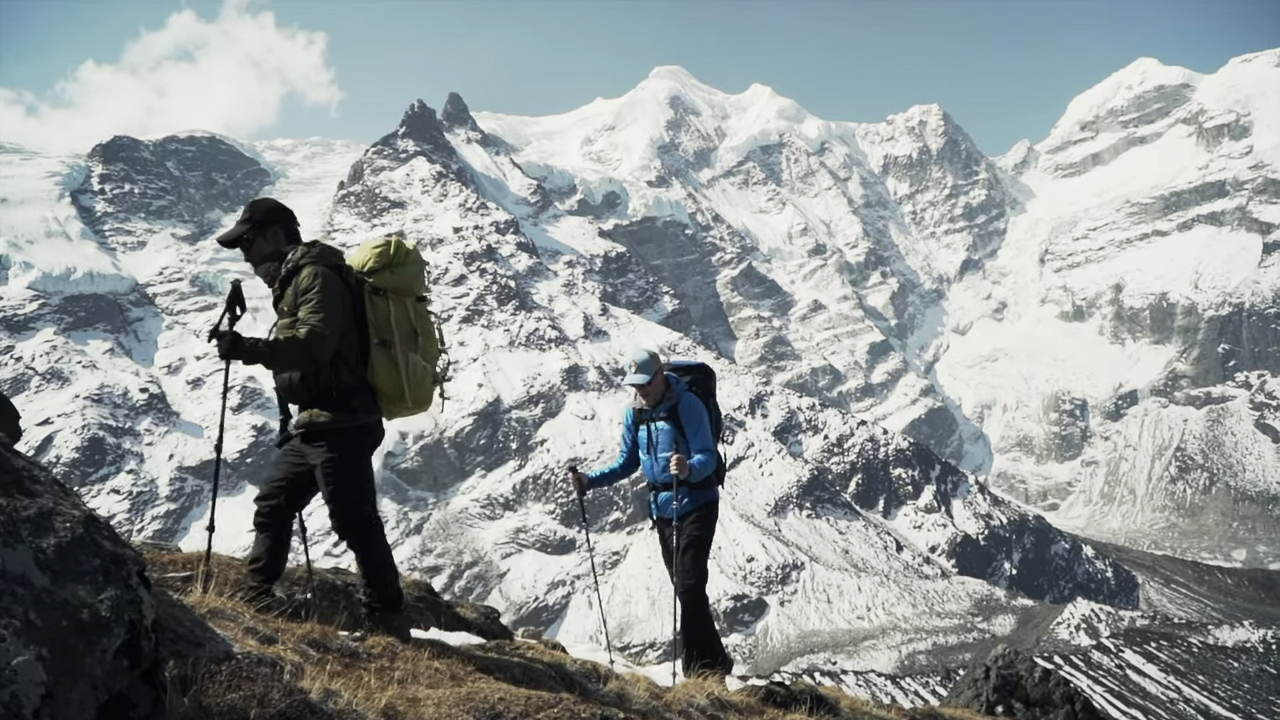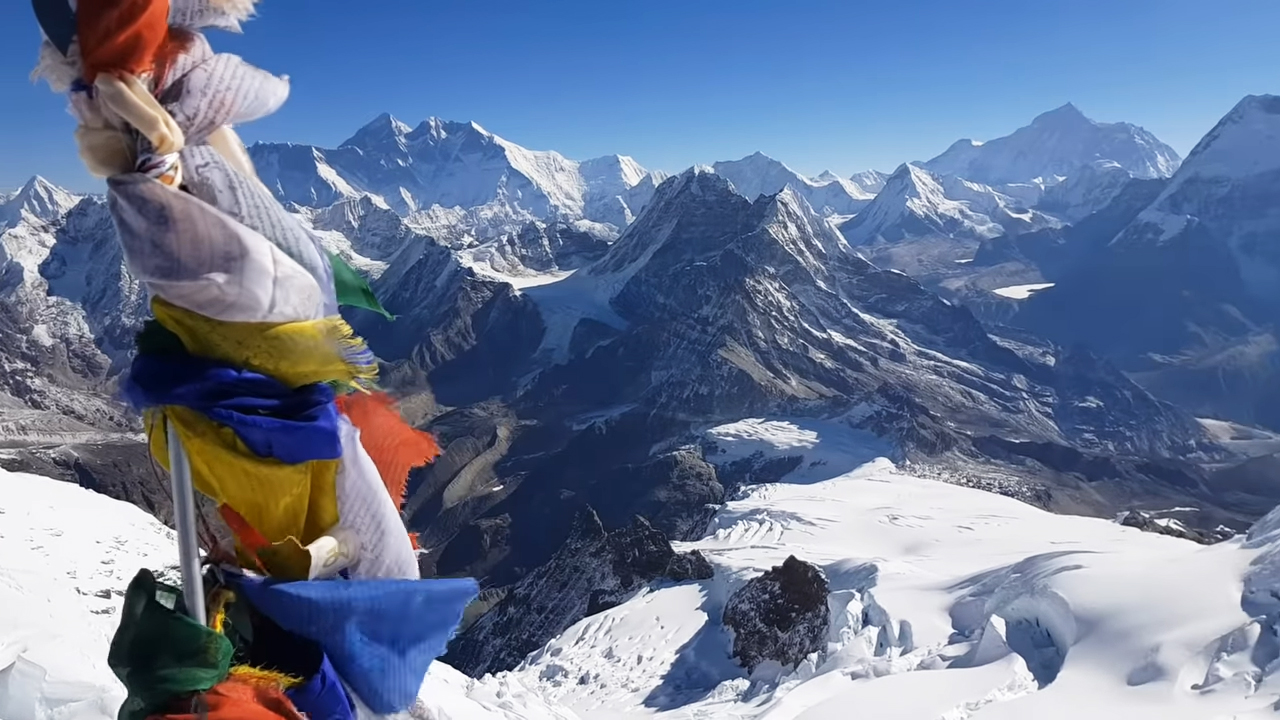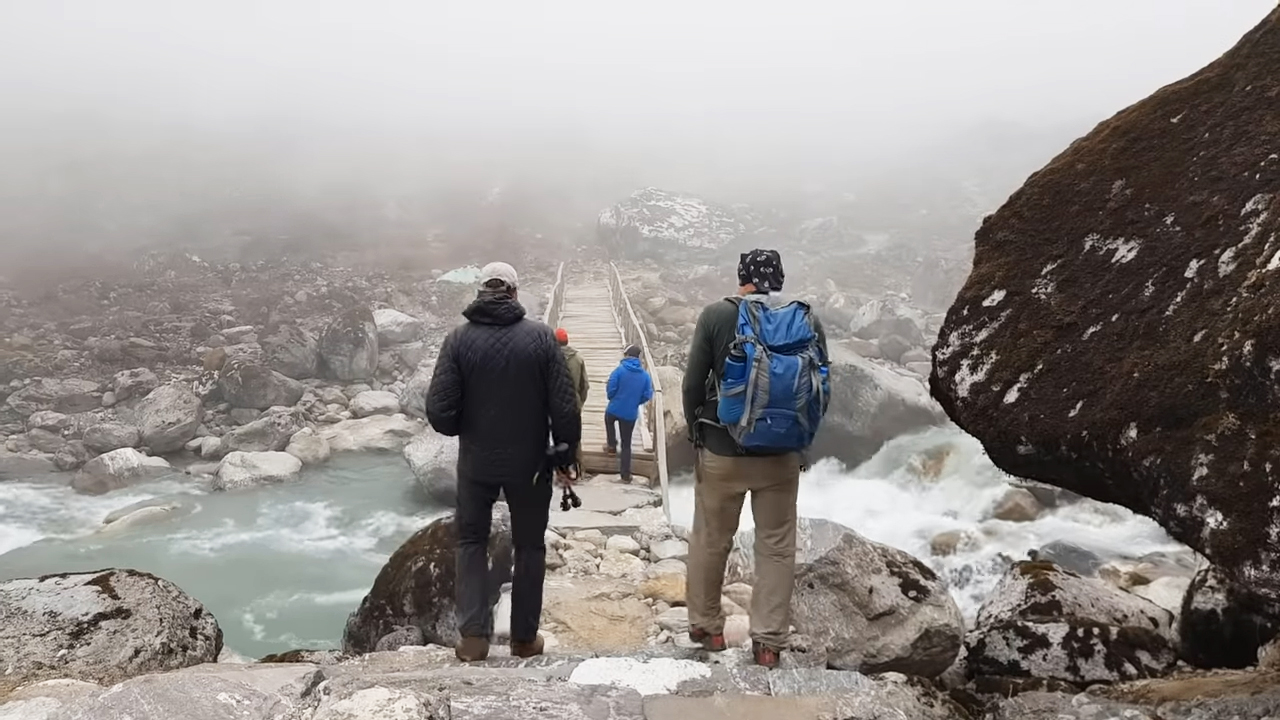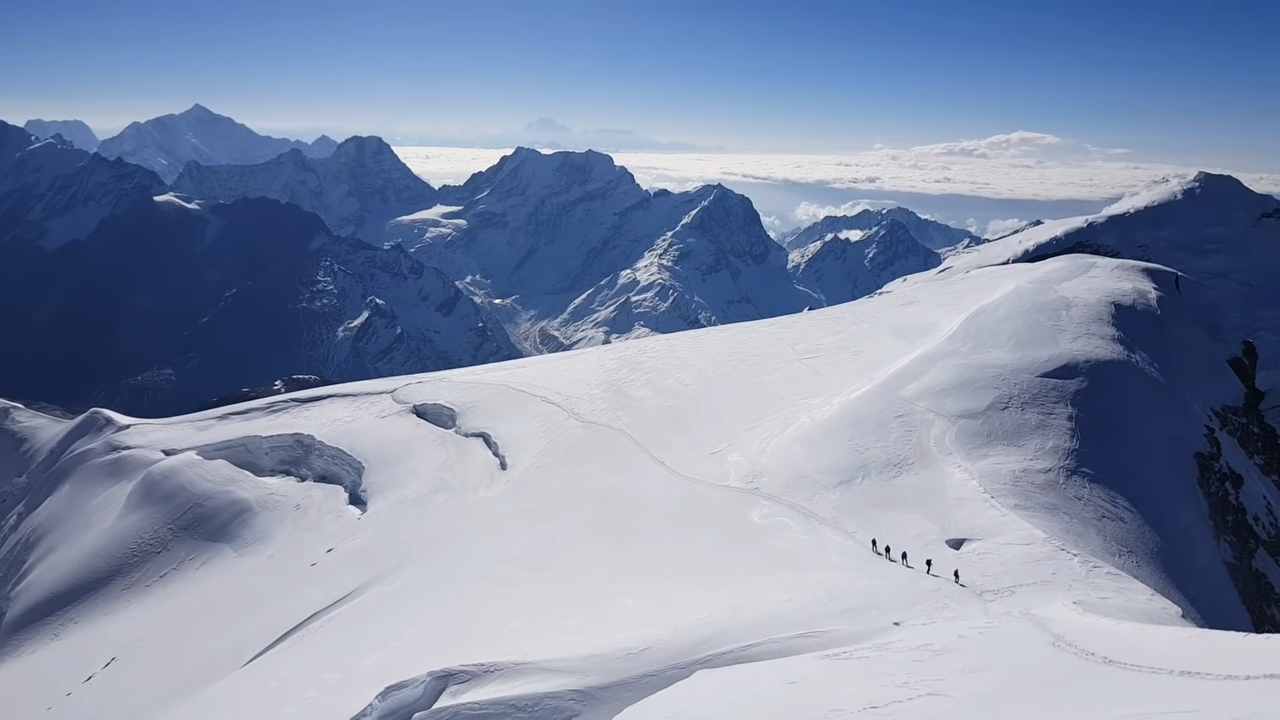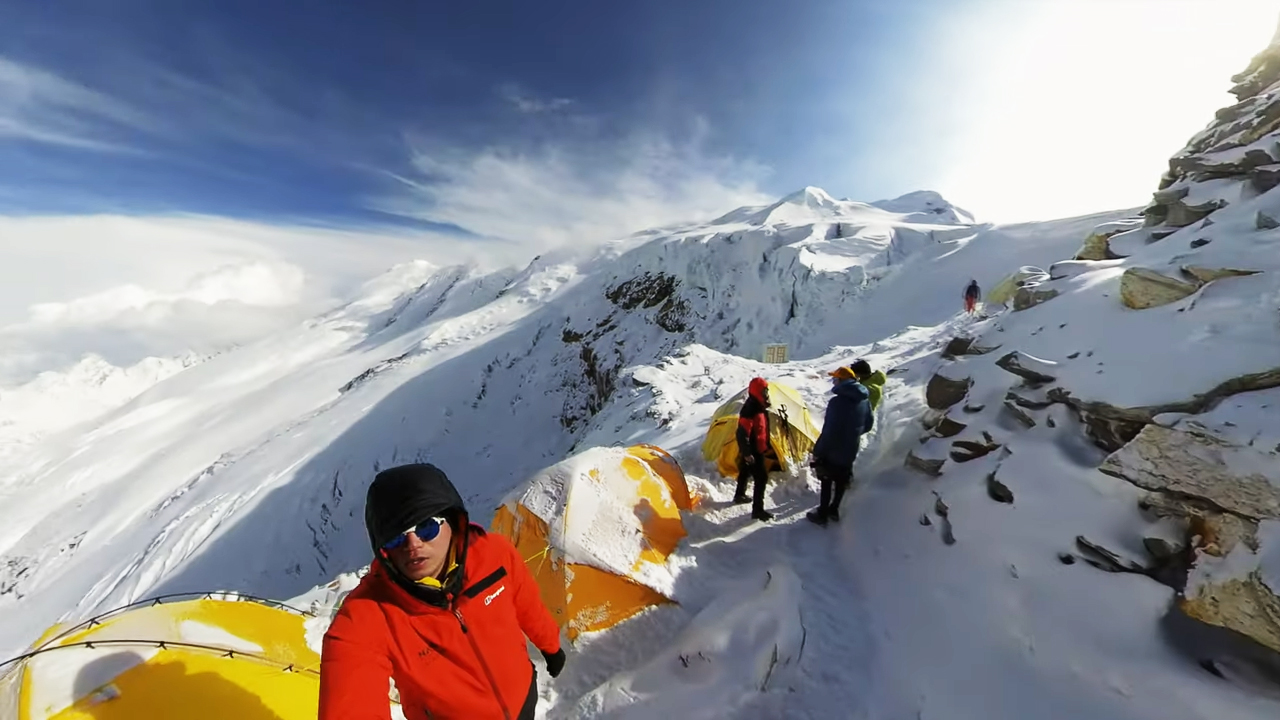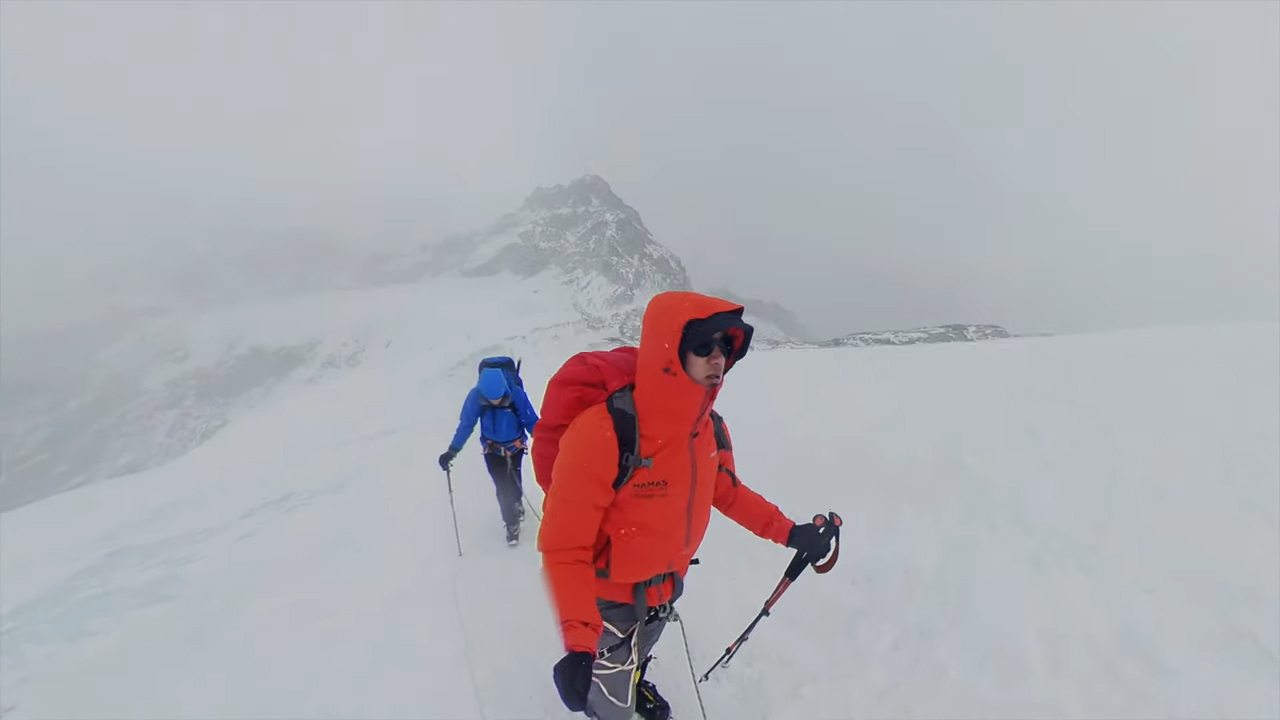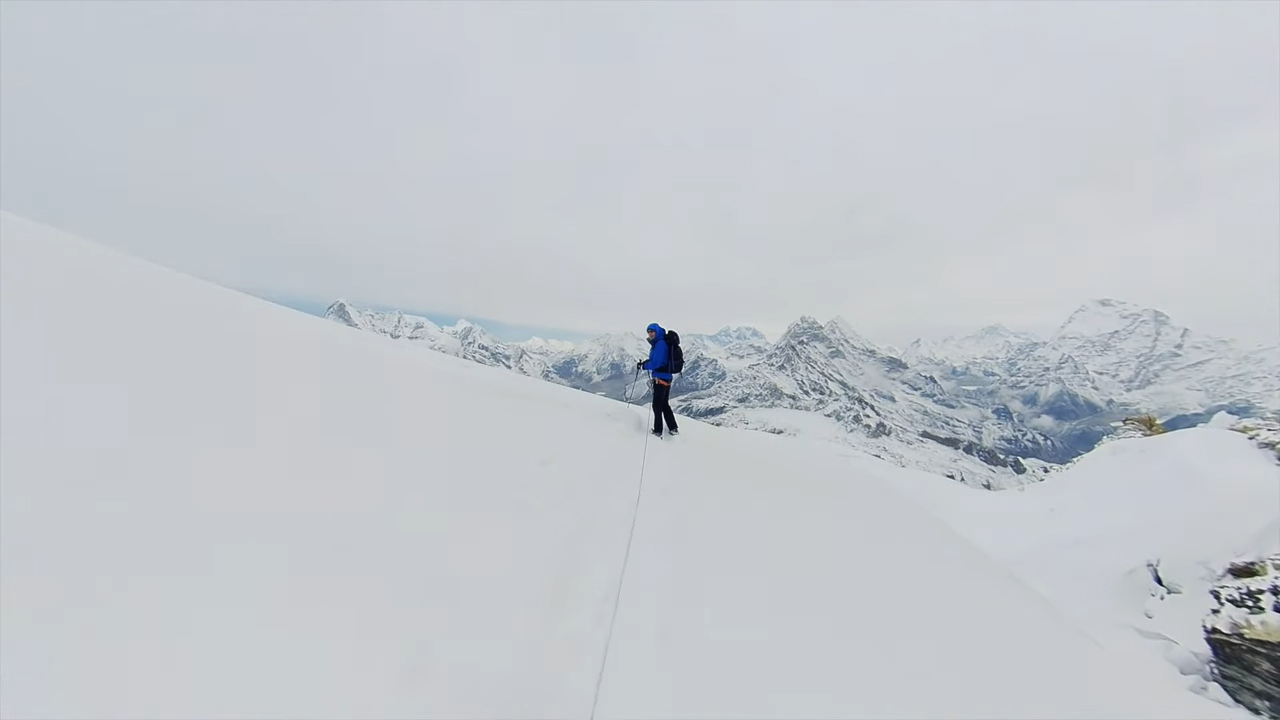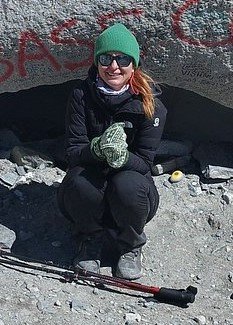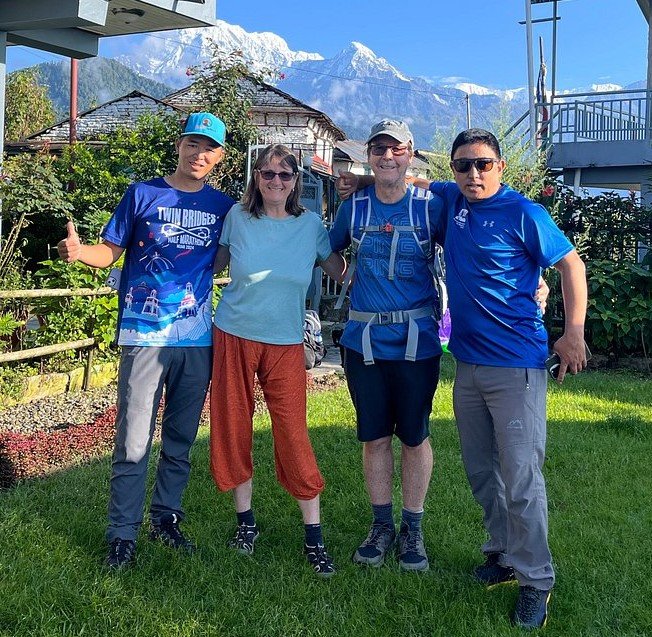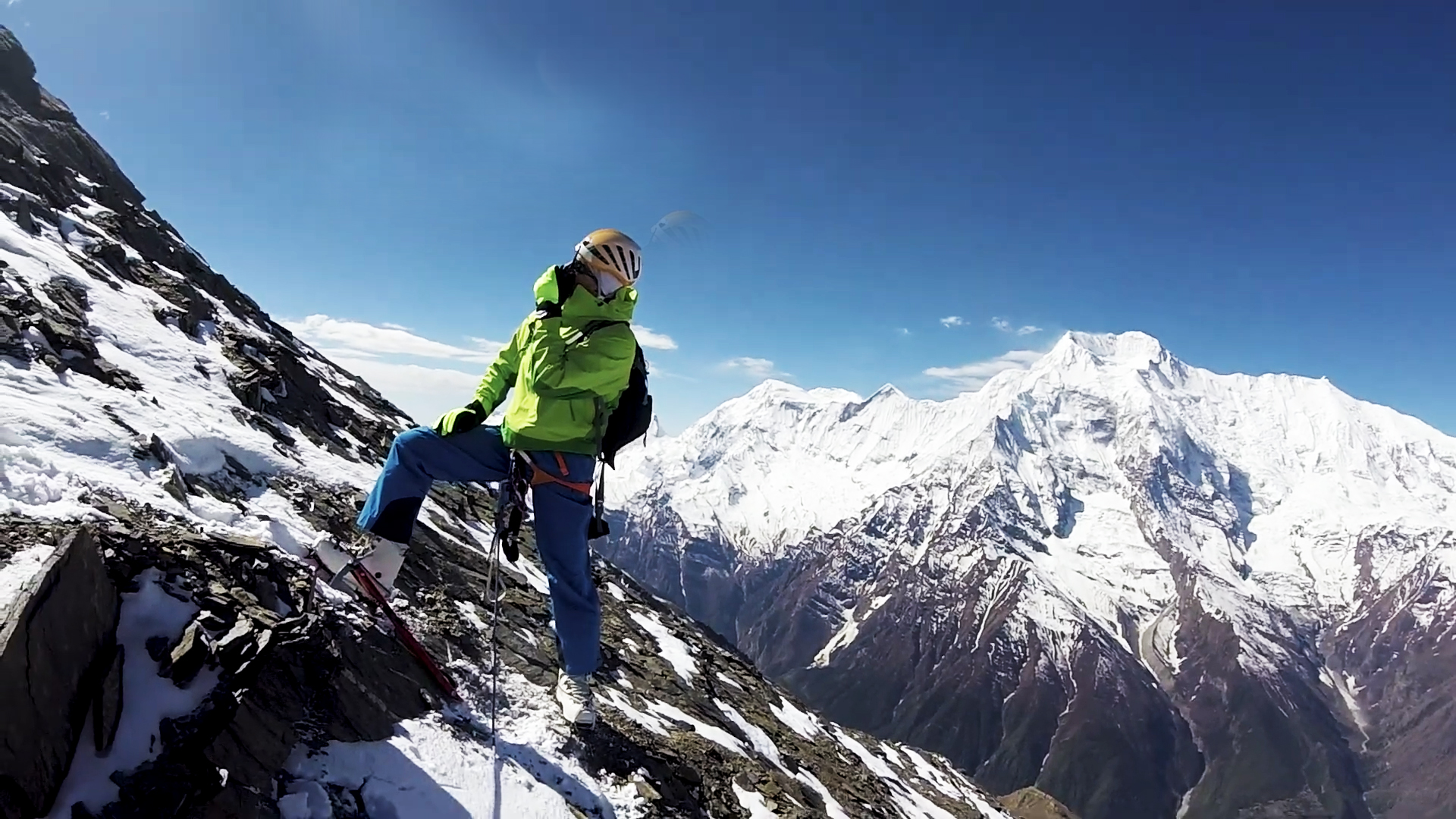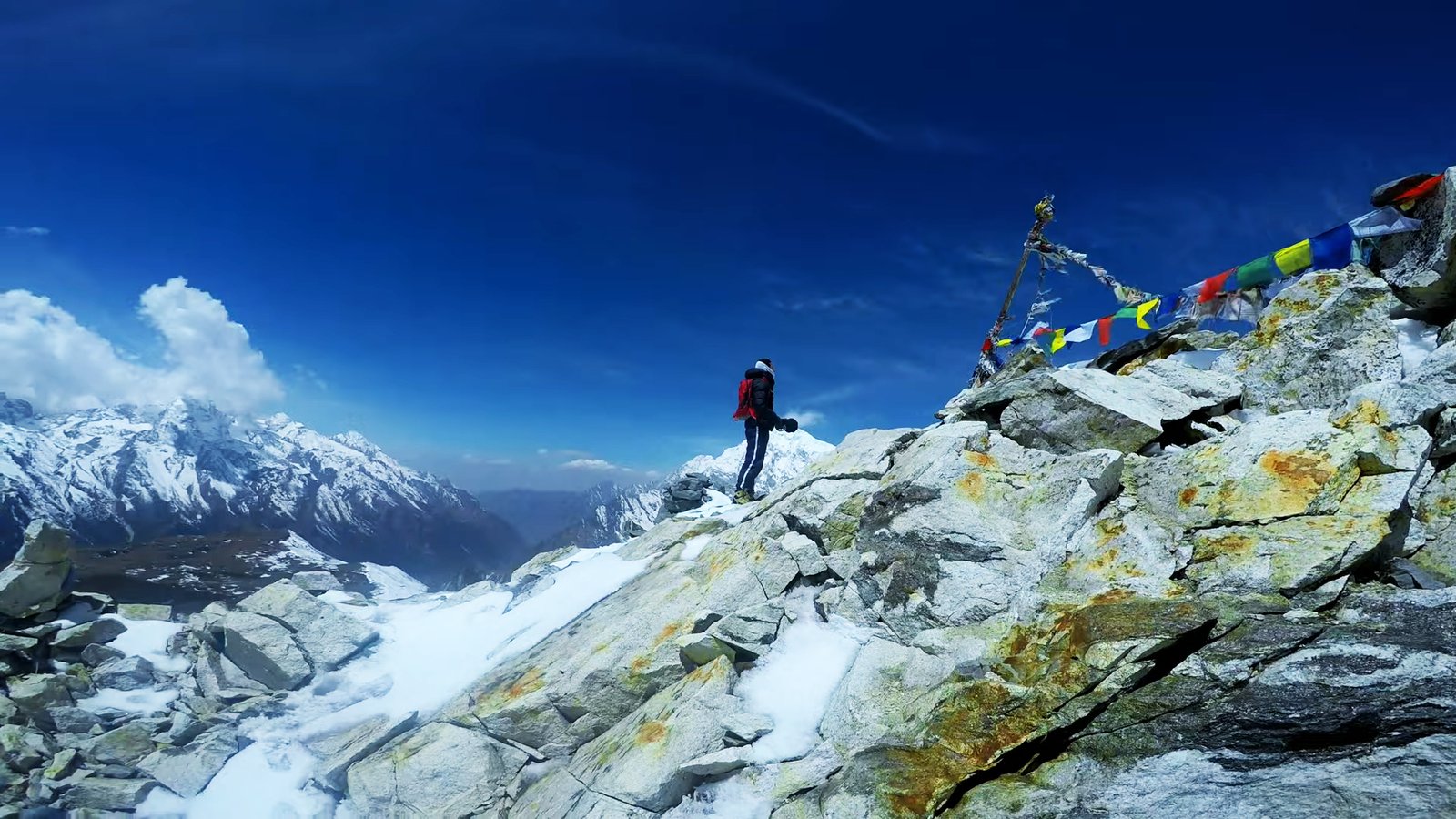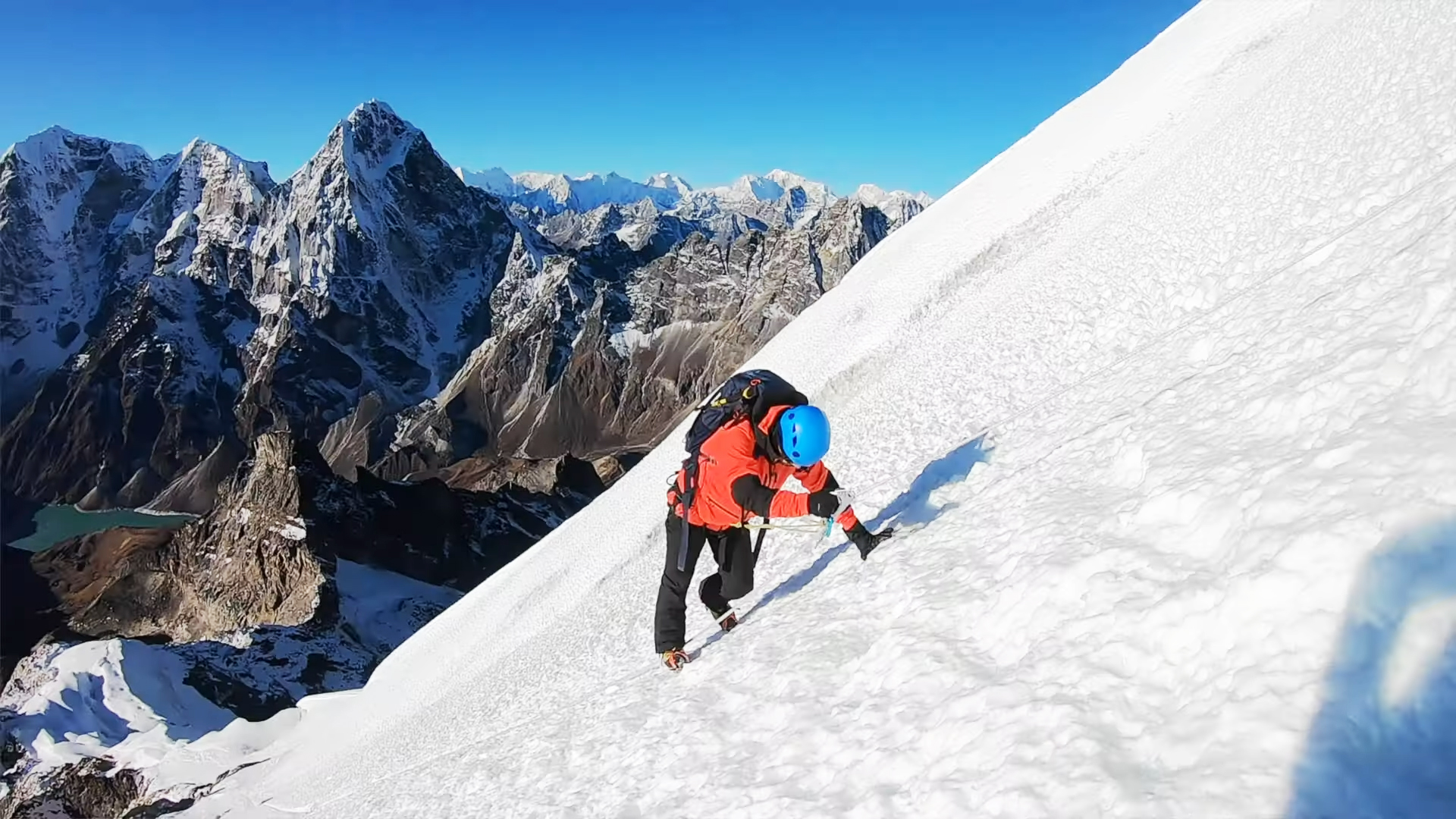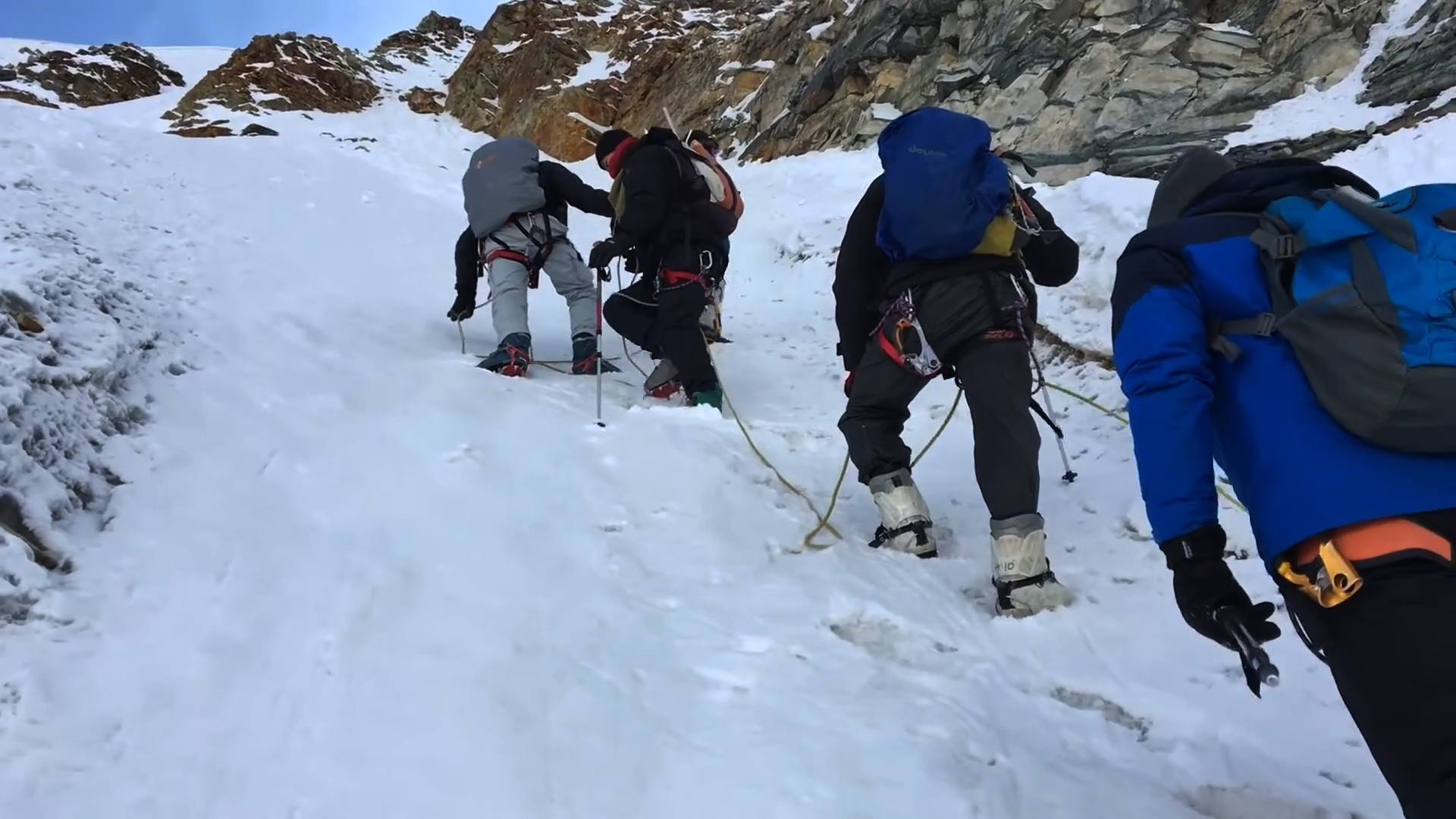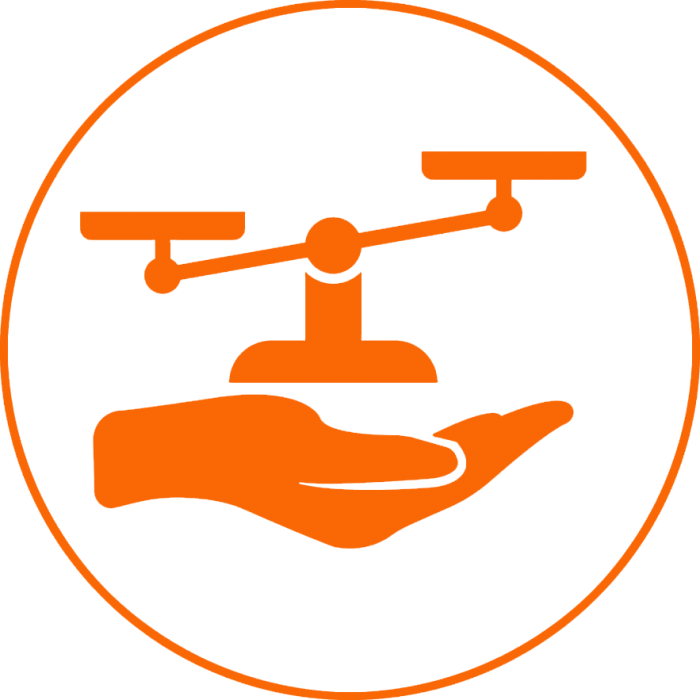Trip Overview
Introduction to Mera Peak Climbing
Mera Peak Climbing is a combination of peak climbing and trekking. Mera Peak is located in the Everest region, and it is the most popular climbing peak in Nepal after Island Peak. It is the highest permitted trekking peak in Nepal with an altitude of 6,654 meters. The summit of Mera Peak offers you a view of magnificent peaks above 8,000 meters, such as Mount Everest (8,848 m), Makalu (8,485 m), Kanchenjunga (8,586 m), Cho Oyu (8,201 m), and Lhotse (8,516 m).
On your way to Mera base camp, you cross beautiful valleys, rhododendron green forests, bamboo, Jupiter, etc. You also have the opportunity to interact with the locals in the settlements and learn about their religion, culture, traditions, and way of life. The magnificent view of Mount Everest makes your journey even more exciting and extraordinary.
Mera Peak Climbing is a trekking peak as it is less than 7,000 meters high. And you can climb it without enough experience of the mountain; however, you need technical skills to climb. Climbing with weights on your back requires a lot of stamina and endurance. Pre-climbing training is important, and this training will be provided to you by a professional guide during the trip.
You may visit: Ultra Light Aircraft in Pokhara City, Phewa Lake, Sarangkot Hill, Mountains
Prepare for Climb Peak
You have to face some difficulties as you have to use different types of climbing equipment to reach the top of the peak. So you should prepare in advance both physically and mentally. Aerobic and cardio exercises are the best way to boost your stamina and increase your body’s endurance capacity.
Don’t ignore the fact that insurance is mandatory because the mountain weather changes suddenly and is not in your favor. Some people make the mistake of taking a light climb to Mera Peak, which is a big mistake. Mera Peak climbing route takes you to the rocky and sloppy region, so you need a climbing guide who has completed an advanced climbing course and is insured.
Teahouses are available almost everywhere on the trail, but for 2 days, you have to set camp at base camp and high camp. Spring and autumn are the best times to climb the mountain and enjoy the amazing views of the Himalayan Vista. Our experienced team has prepared an itinerary keeping in mind all the aspects. However, we tailor an itinerary according to your time and wishes.
You may like to visit: Nepal Cultural Tour in just 12 Days, Itinerary, Cost, Distance, Culture
Trip Itinerary
Fly Kathmandu to Lukla (2,730 m) – 45 minutes.
Lukla to Chutanga (3,430 m) – 4 to 5 hours walk.
Chutanga to Thuli Kharka (4,320 m) via Zwatra la (4,600 m) – 6 to 7 hours walk.
Thuli Kharka to Kothe (3,600 m) – 6 to 7 hours walk.
Kothe to Thaknak (4,350 m) – 4 to 5 hours walk.
Thaknak to Khare (5,045 m) – 3 to 4 hours walk.
Acclimatization day at Khare.
Khare to Mera Base Camp (5,300 m) – 4 to 5 hours walk.
Mera Base Camp to High camp (5,780 m) – 5 to 6 hours walk.
Mera High Camp to Summit (6,461 m) and back to Khare (5,045 m) – 9 to 10 hours walk.
Free day at Khare.
Khare to Kothe (3,600 m) – 5 to 6 hours walk.
Kothe to Thuli Kharka (4,320 m) – 7 to 8 hours walk.
Thuli Kharka to Lukla – 6 to 7 hours walk.
Fly Lukla to Kathmandu – 45 minutes.
Why not list the price?
Each client's needs may be different. The price of the trip varies according to the size of your group and the service you want. The cost of the trip is calculated according to the type of service and accommodation chosen by our customers.
Each trip is customized to fit the client's needs and group size, so the price of each organized trip is different. Please let us know the service you want and the size of the group. We create trips to suit your taste and travel budget per your requirements. Hope you find our price calculation reasonable according to your needs and preferences.
Frequently asked questions about this trip
How difficult is the trek?
The difficulty depends on where and how long you want to trek. The short trek is easy while the long trek requires some physical fitness.
What is altitude sickness?
Altitude sickness is normally known as acute mountain sickness. This can happen when people rapidly climb up to an altitude of more than 3000 meters. We ensure minimal risk by adding rest to our trekking itineraries. Most people will feel some effects of altitude, some shortness of breath and possibly light headache, this is normal enough. Acute mountain sickness patients are quite different and usually have a serious headache, sickness, and lose awareness. In almost all possible cases there are sufficient warning signs to take action properly. Descending to a lower altitude is usually enough to prevent any further problems.
What type of accommodation is available during the trekking?
There are mainly tea houses and lodges available for trekking and they are usually made using local materials and are very comfortable. These accommodations are often family-run and usually provide single and double rooms. The dining room is on the ground floor and is often on fire. All food will be cooked in order in the family kitchen. Toilet facilities are sometimes separate and sometimes outside. Most lodges provide mattresses and blankets. It's a good idea to always have a sleeping bag, which can be useful, and perhaps an inflatable pillow.
How long do we walk every day on trekking?
Trekking programs are classified into three different categories: soft, moderate and hard. Soft treks are only about 7 days to 10 days in duration. They generally do not go above 4000 meters; you can expect to walk about 4-5 hours each day. Moderate treks are challenging enough and long treks that go to the high hill country. Physically exhausting, this involves trekking along the cliffs of the mountains for about 6-8 hours. Harder treks are longer treks that go farther away from the general abode of trekkers and tourists. These physically challenging treks involve walking for 7- 9 hours each day.
How much weight do I need to carry on the trek?
You carry some of your personal belongings, such as warm clothing, water, snacks, sun block, cameras and more. Generally, these items will be lightweight, from 5 to 10kg (10 to 20 pounds). Our porters are available for other heavy goods and for your information one porter would be sharing by two people. The maximum weight carried by one porter is total 20 kg. this means 10 kg. per person is allowed for the trek. In case if you wish to carry more than this weight then you need to hire additional porters.
What is the best time for trekking in Nepal?
October and November are considered as the best times for trekking in Nepal due to dry season. December and January are also considered good times for trekking but it is extremely cold at high altitudes.
Google Reviews
Guest reviews
We made it to Everest Base Camp on the 3rd of November!!! Myself and Dami Sherpa, who was the best company and always extremely helpful. Amazing hike and great experience! Fully recommended!

